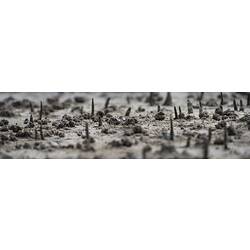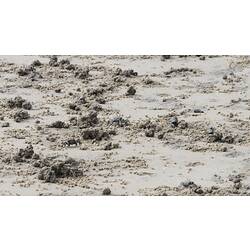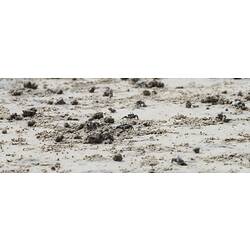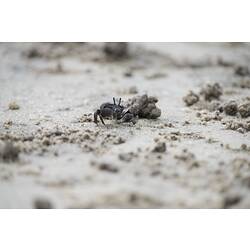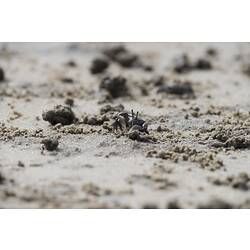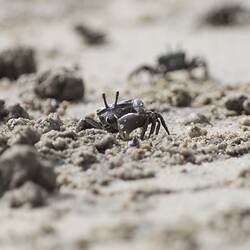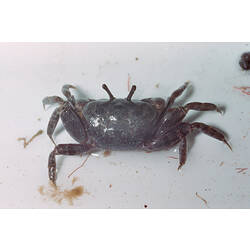General Description
Body purple. Claws purple with white tips in adults, orange-red in juveniles. Carapace oval shape, curved at the sides and wider than long. Claws curled or twisted at the tips. Up to 3 cm wide (carapace).
Biology
Semaphore Crabs wave their twisted claws in the air to signal to other crabs from the opening of their burrow. They live in vertical burrows with a terminal chamber. When the burrow is covered by water, they plug the end of the burrow with mud. They are communal, often forming groups, but will fiercely defend their own burrows. The claws of adult males are bigger than those of the females.
Distribution
Eastern Australia.
Habitat
Mudflats at high tide level in sheltered waters.
More Information
-
Animal Type
-
Animal SubType
-
Brief Id
Purple, oval carapace, claws twisted at the tips.
-
Colours
Purple
-
Habitats
-
Diet
Carnivore
-
Diet Categories
Animal matter
-
Endemicity
-
Commercial
No
-
Conservation Statuses
CITES: Not listed, FFG Threatened List: Not listed, EPBC Act 1999: Not listed, IUCN Red List: Not listed
-
Depths
Shore (0-1 m), Shallow (1-30 m)
-
Water Column Locations
On or near seafloor
-
Taxon Name
-
Scientific Author
(Milne Edwards, 1837)
-
Common Name
Semaphore Crab
-
Phylum
-
Subphylum
-
Superclass
-
Class
-
Subclass
-
Superorder
-
Order
-
Suborder
-
Infraorder
-
Family
-
Subfamily
-
Genus
-
Species Name
cordiformis

